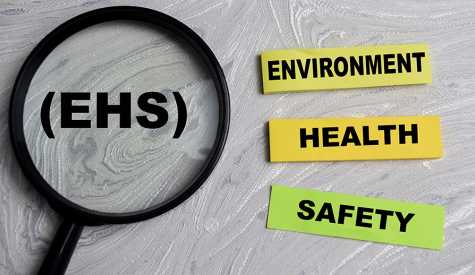How Unified EHS Software Cuts Costs and Improves Compliance

Managing workplace safety and compliance is a complex challenge, especially when multiple disconnected systems for Environmental Health and Safety (EHS) and Learning Management (LMS) are in play. These fragmented tools often create inefficiencies, forcing safety professionals to spend countless hours juggling redundant processes and piecing together scattered data.
But there’s a better way. By consolidating EHS and LMS into a unified platform, organizations can streamline workflows, reduce administrative burdens, and unlock valuable insights that drive smarter safety decisions. This article explores the pitfalls of fragmented systems and the transformative benefits of an integrated approach.
The Problem: Fragmented Systems Create Inefficiency
Fragmented systems refer to the use of multiple disconnected tools for tasks like training, incident tracking, compliance reporting, and audits. These tools rarely communicate effectively with one another, leaving professionals to fill in the gaps manually.
Key Challenges
Duplication of Efforts: Professionals often enter the same data into multiple systems, wasting valuable time and increasing the risk of errors. For example, training completions may not sync with compliance records, leading to mismatched data.
Missed Deadlines and Errors: Manually tracking compliance deadlines increases the likelihood of missing critical tasks. OSHA penalties for non-compliance can exceed $15,000 per violation, which adds up quickly for organizations with inefficient tracking systems.
Difficulty in Monitoring Trends: Without a unified view of safety incidents and employee training progress, spotting trends or identifying risks becomes nearly impossible. This lack of visibility hampers proactive decision-making.
Fragmented systems overwhelm safety teams with inefficiencies, leaving little time to focus on critical safety improvements. It’s a problem that organizations can no longer afford to overlook.
The Solution: Unified EHS and LMS Platforms
A unified platform integrates Environmental Health and Safety (EHS) systems with Learning Management Systems (LMS), creating a single source of truth for all safety and compliance needs. This integration goes beyond simply housing data in one place; it provides the functionality to streamline workflows, improve communication across teams, and ensure a seamless approach to safety management and employee training.
For example, rather than logging into separate tools to access incident reports and training progress, safety managers can view both in a single dashboard, making it easier to connect training outcomes to safety performance. This holistic approach ensures nothing slips through the cracks, whether it's a compliance task, training schedule, or hazard mitigation. Let’s take a closer look at the key features of these systems.

Centralized Data
A unified platform eliminates the silos created by fragmented systems. Instead of tracking incidents in one system and managing training records in another, all data is centralized and accessible through a single interface. This makes it easier for organizations to:
Spot Trends: Compare training records with incident data to identify potential knowledge gaps.
Simplify Reporting: Generate comprehensive reports with a few clicks, ensuring all required data is at your fingertips.
Enhance Accuracy: Reduce the risk of discrepancies caused by duplicative data entry or miscommunication between systems.
For example, a construction company using a unified platform might notice that falls from heights are a recurring issue and use this insight to prioritize fall protection training.
Automation
Automation replaces repetitive, manual processes with workflows that save time and minimize human error. Some examples include:
Assign Training Automatically: Match employees to required training based on their roles or incident histories.
Stay Ahead of Deadlines: Notify teams of compliance tasks or overdue actions automatically.
Simplify Approval Processes: Streamline reviews for incidents and corrective actions, ensuring faster resolution.
This level of automation is particularly valuable in industries like manufacturing or healthcare, where compliance is tightly regulated, and missed tasks can result in significant penalties or safety risks.
Advanced Analytics
Analytics transform raw data into actionable insights, enabling safety leaders to make informed decisions. Key capabilities include:
Predictive Insights: Use historical data to anticipate future risks and prioritize preventive measures.
Real-Time Monitoring: Track safety metrics and training progress as they happen, ensuring faster intervention when needed.
Custom Dashboards: Tailor reporting to meet the specific needs of stakeholders, whether they’re executives, safety teams, or regulators.
For instance, an analytics dashboard might show a rise in near-miss incidents in a specific department, prompting leadership to investigate and implement targeted safety measures. With a clear understanding of how unified platforms address safety challenges, the next step is finding the right partner to implement these solutions. Here’s how HSI can help your organization achieve its safety and compliance goals.
How HSI Can Help
Managing safety and compliance shouldn’t require juggling multiple systems for training, incident tracking, chemical management, and sustainability. HSI simplifies it all by consolidating your EHS, LMS, and compliance needs into a single, unified platform. Our solutions are designed to integrate seamlessly into your operations, reducing risk and administrative burden while empowering your teams to work smarter. Here’s how we bring it all together:
HSI Intelligence: Smarter Safety with AI: Our AI-powered capabilities provide more than automation, they deliver proactive solutions. HSI Intelligence analyzes your data to offer tailored training recommendations, identify hazards through advanced image recognition, and uncover actionable insights. These tools help your organization make informed, confident decisions that enhance safety and compliance.
The Industry’s Largest Safety Training Library: With over 5,000 courses, HSI offers the most comprehensive catalog of training resources available. From compliance basics to industry-specific advanced practices, our training library ensures your team is equipped to handle real-world challenges while staying compliant.
Chemical Management and Risk Mitigation: HSI simplifies chemical management by consolidating Safety Data Sheets (SDS), hazard tracking, and compliance documentation into one platform. By eliminating the need for standalone systems, we reduce the risk of data silos, improve accessibility, and streamline processes, ensuring your team has the tools to manage hazardous materials safely and efficiently.
ESG and GHG Management Made Easy: Our Environmental, Social, and Governance tools integrate greenhouse gas tracking, waste management, and compliance metrics into the platform. With these capabilities, you can meet regulatory requirements and internal sustainability goals without adding complexity.
Fragmented systems aren’t just inefficient; they put your organization at risk by creating blind spots and redundancies. HSI’s unified platform consolidates training, compliance, chemical management, and risk mitigation into one seamless solution, saving time, cutting costs, and improving safety outcomes.
Don’t let multiple systems hold you back. Take the first step toward simplifying your safety and compliance efforts. Contact HSI today to schedule a personalized demo and see how our integrated platform can transform your risk management strategy.


